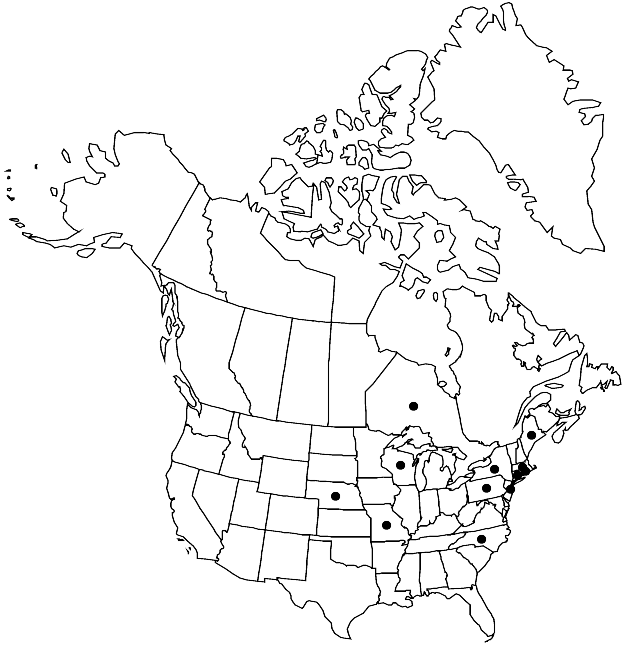Salix atrocinerea
Fl. Lusit. 1: 31. 1804.
Shrubs, 3–12 m. Stems: branches yellowbrown, gray-brown, or redbrown, not glaucous, pilose or villous to glabrescent, (peeled wood often with many striae, to 45 mm); branchlets gray-brown or yellowbrown, puberulent, pilose, villous, or velvety. Leaves: stipules (sometimes marcescent) foliaceous, apex acute; petiole convex to flat adaxially, 3–15 mm, tomentose, or velvety to glabrescent adaxially; largest medial blade narrowly to broadly elliptic, oblanceolate, obovate, broadly obovate, 29–105 × 14–52 mm, 1.8–4.3 times as long as wide, base cuneate or convex, margins slightly revolute, entire, crenate, or sinuate, (glands submarginal or epilaminal), apex acute, convex, or acuminate, abaxial surface glaucous, tomentose or coarsely villous to glabrescent, hairs (white, sometimes also ferruginous), erect, spreading, or appressed, wavy or curved, adaxial dull or slightly glossy, pubescent or pilose, (hairs white, sometimes also ferruginous); proximal blade margins entire; juvenile blade yellowish green or reddish, glabrous, tomentose, or long-silky abaxially, hairs white, sometimes also ferruginous. Catkins flowering before leaves emerge; staminate stout, 11–16 mm, flowering branchlet 0–5 mm; pistillate densely to loosely flowered, stout, 11–18 mm, flowering branchlet 0–3 mm; floral bract brown, black, or bicolor, 1–3 mm, apex acute, convex, or rounded, abaxially hairy, hairs straight or wavy. Staminate flowers: adaxial nectary narrowly oblong, oblong, or ovate, 0.4–0.9 mm; filaments distinct, glabrous or hairy on proximal 1/2 or basally; anthers yellow, shortly cylindrical or ovoid, 0.6–1 mm. Pistillate flowers: adaxial nectary oblong, square, or obovate, 0.4–0.9 mm, shorter than stipe; stipe 1.2–2.7 mm; ovary pyriform or obclavate, tomentose or short-silky, beak slightly bulged below styles; ovules 12 per ovary; styles 0.2–0.5 mm; stigmas broadly cylindrical, 0.23–0.43–0.63 mm. Capsules 5–7 mm. 2n = 76.
Phenology: Flowering mid Mar-mid May.
Habitat: Wooded wetlands, marshes, sandy beaches, mesic prairies, edges of birch-maple or oak woodlands
Elevation: 0-700 m
Distribution

Introduced; Ont., Conn., Maine, Mass., Mo., Nebr., N.J., N.Y., N.C., Pa., R.I., Wis., Europe
Discussion
Hairs on abaxial leaf surfaces of Salix atrocinerea often are spreading to erect, and curly as in S. humilis. Usually, S. atrocinerea can be recognized by its closely spaced parallel tertiary venation. See 76. S. discolor and 81. S. cinerea for further comparative descriptions.
Selected References
None.
Lower Taxa
"-0.63mm" is not declared as a valid unit of measurement for this property.